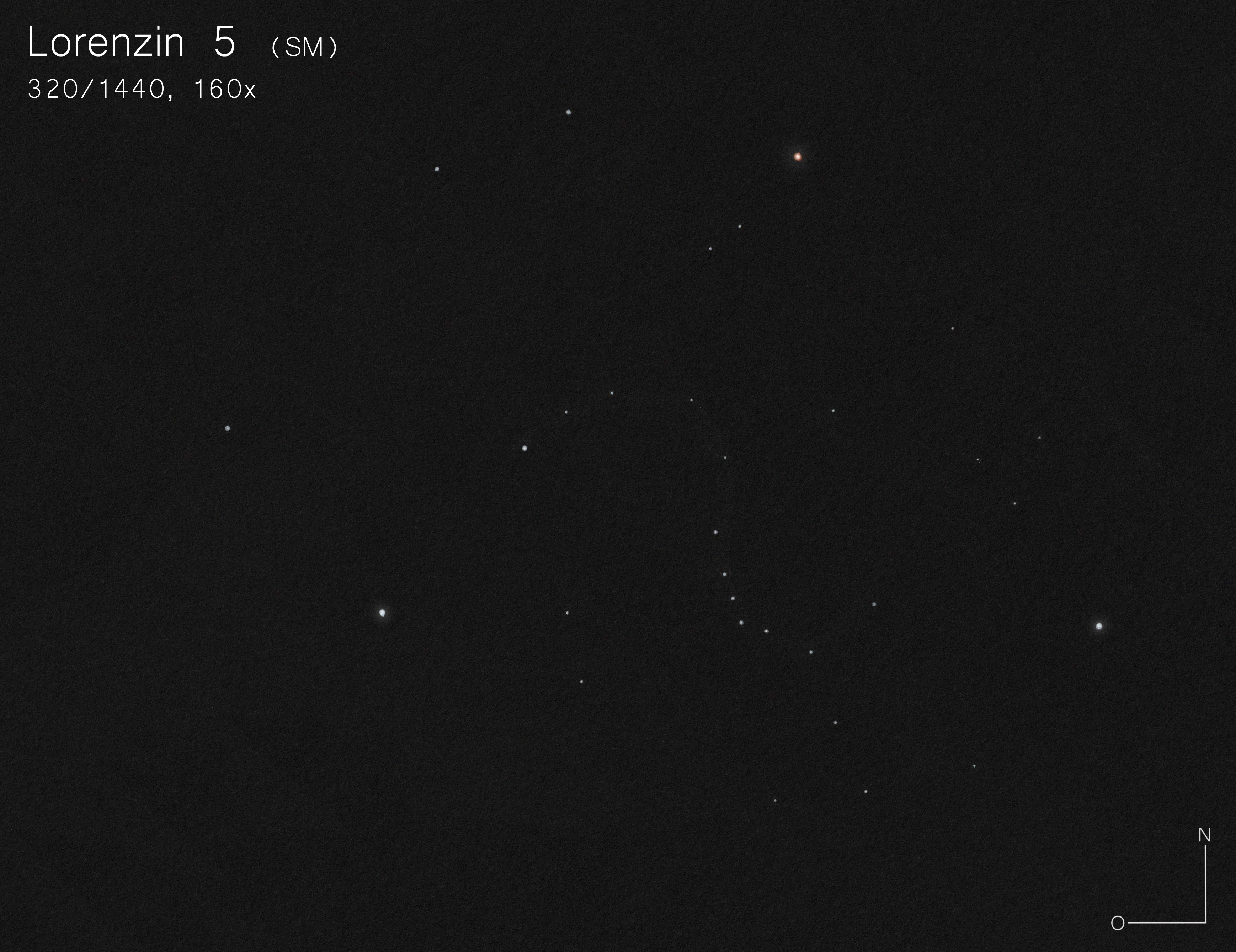Skyguide - Selected objects for every season
The Skyguide is primarily intended to give suggestions for your own observations and will briefly describe selected objects for each season of the year. Both easy and difficult objects will be selected. How difficult an object is depends of course on several factors, especially sky quality, telescope aperture and experience of the observer.
For each object the most important information is given in short form. These are supplemented by photos or sketches. Furthermore, a map, created with the free software Cartes du Ciel (Skychart), is available for a rough orientation. In general, I recommend, to create your own finder charts. The visual description of the object is based mainly on own observations and should serve only as a starting point.
Skyguide 2023-2 (Summer)
In this little sky tour we focus on some special objects south of the well known wild duck cluster (Messier 11) in the constellation Scutum, the Shield. Messier 11 is of course always worth a look and presents itself quite respectable in every instrument. Let's start with the open cluster Messier 26. Because of its proximity to the stars Epsilon & Delta Scuti it is easy to find. With a total brightness of mv = 8m.9 it is certainly not one of the brightest of its kind, but under sufficiently dark skies it can be seen well with binoculars as a small cloud of stars and shows similarities to Messier 11. To resolve Messier 26 into individual stars a telescope is needed. Then its irregular star distribution can be seen well.
South of Messier 26 at a distance of a little more than one degree a look at the double star STF 2373 (7m.4 and 8m.4) is worthwhile. With an angular distance of 4.3 arcseconds it should be separable in any telescope. Sissy Haas, a passionate double star observer from the USA, describes the double star with a 125 mm refractor in her book “Double Stars for Small Telescopes” [1] as follows: “A bright, easy pair with attractive closeness. A very lemony white pair of stars, just mildly unequal, that are split by hair at 50x.”
Further to the southwest we find the asterism Lorenzin 5 (18h43m50s / -10°48'30"). The asterism was discovered by Tom Lorenzin (1947 - 2014). Immediately southeast of a 9m.0 bright star is a nicely curved chain of stars, whose brightness is between 11m.0 and 13m.0. Depending on the orientation of the view this can be interpreted as “S” or “2”. This could also be the explanation for the nickname of the asterism: “Essertoo String”. This can be read as “S or Two”. Despite a star-rich environment, the asterism stands out well. In an 12 inch Dobsonian under dark skies it appears very fine and filigree.
Brighter and easier is the globular cluster NGC 6712. Its age is estimated to be about 12 billion years. It is assumed that it was originally much more massive and its passage through the galactic disk resulted in a considerable loss of mass. Visually, the globular cluster offers two interesting details. The center is described by some observers as triangular, giving it an irregular shape. In addition, a dark band passes through the edge of the cluster southeast of the center, which can be seen well in photographs. Under dark skies binoculars are sufficient, where it is of course only visible as a small nebula. But it can be observed together with Messier 11 and Messier 26 in one field of view. To see individual stars, of course, you need a telescope with an aperture of about 12 inches. Under which conditions is something of the dark band visible?
Less than 30 arcminutes west of NGC 6712 two very different planetary nebulae are waiting for us at the end on our tour. IC 1295 shows an interesting ring structure and is already well visible with an aperture of 4 inches, with 8 inches and larger it should be an easy target and irregularities in the brightness distribution become visible. Nebula filters are very helpful here. From which aperture does it show up as ring-shaped? On the other hand, the nearby planetary nebula Kohoutek 4-8 (PK 25-4.1) could be a challenge. It lies in the middle of a very small, curved chain of four stars with magnitudes between 12m.7 and 14m.8. A sufficiently large aperture and especially steady air is needed to see at least the stars and the nebula well separated. A nebula filter is highly recommended for identification. With an 12 inch Dobsonian it is not an easy object.
[1] Sissy Haas: “Double Stars for Small Telescopes”, Sky Publishing Corporation (2006)



